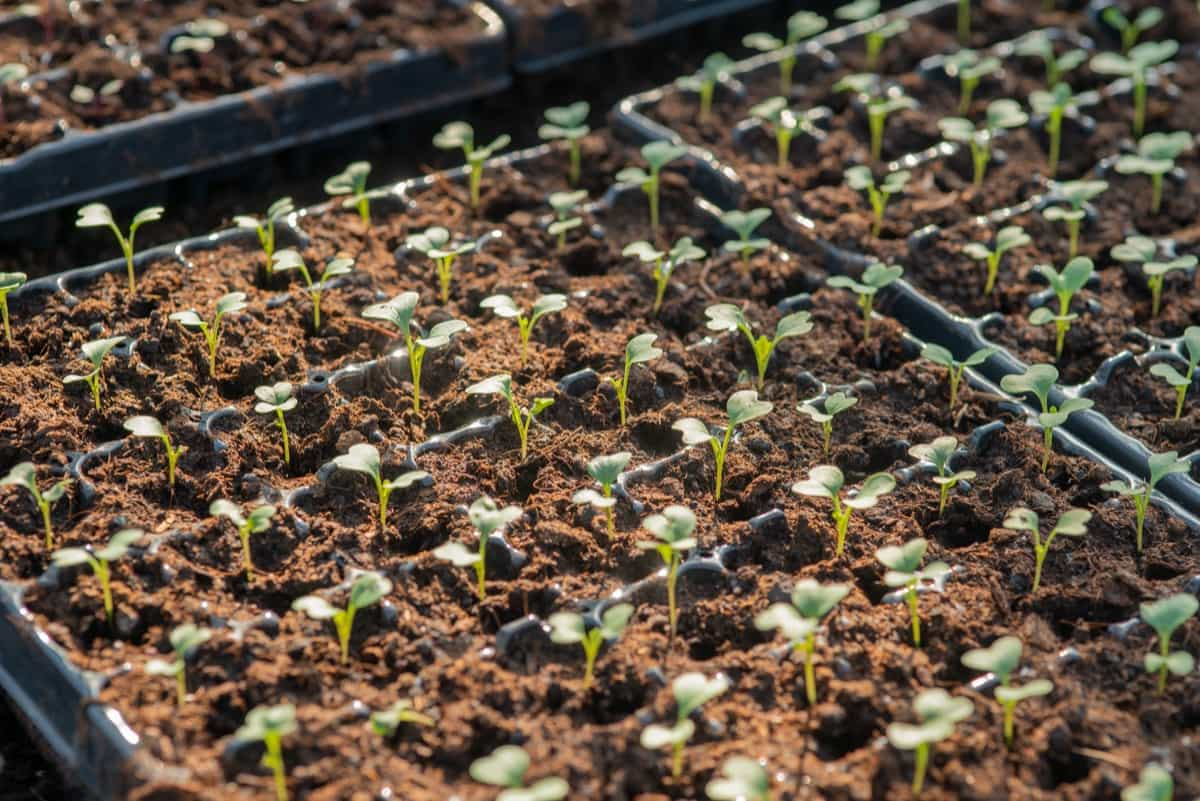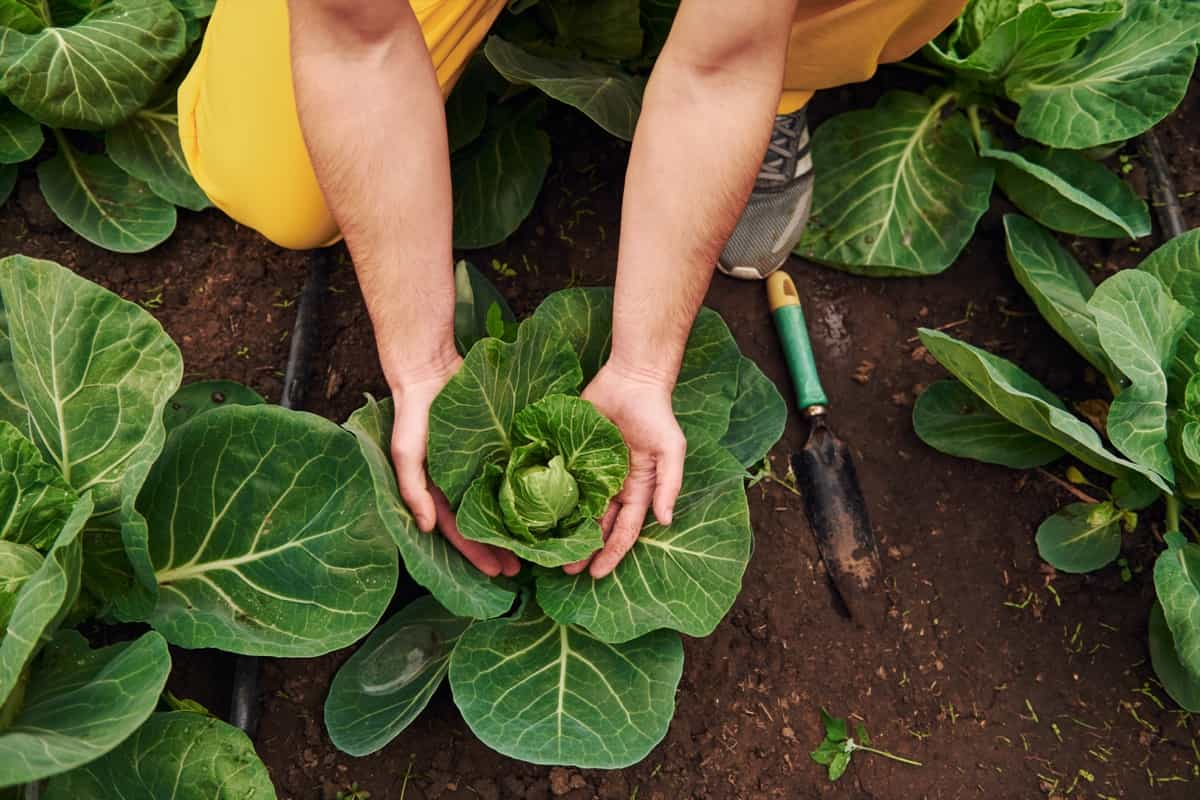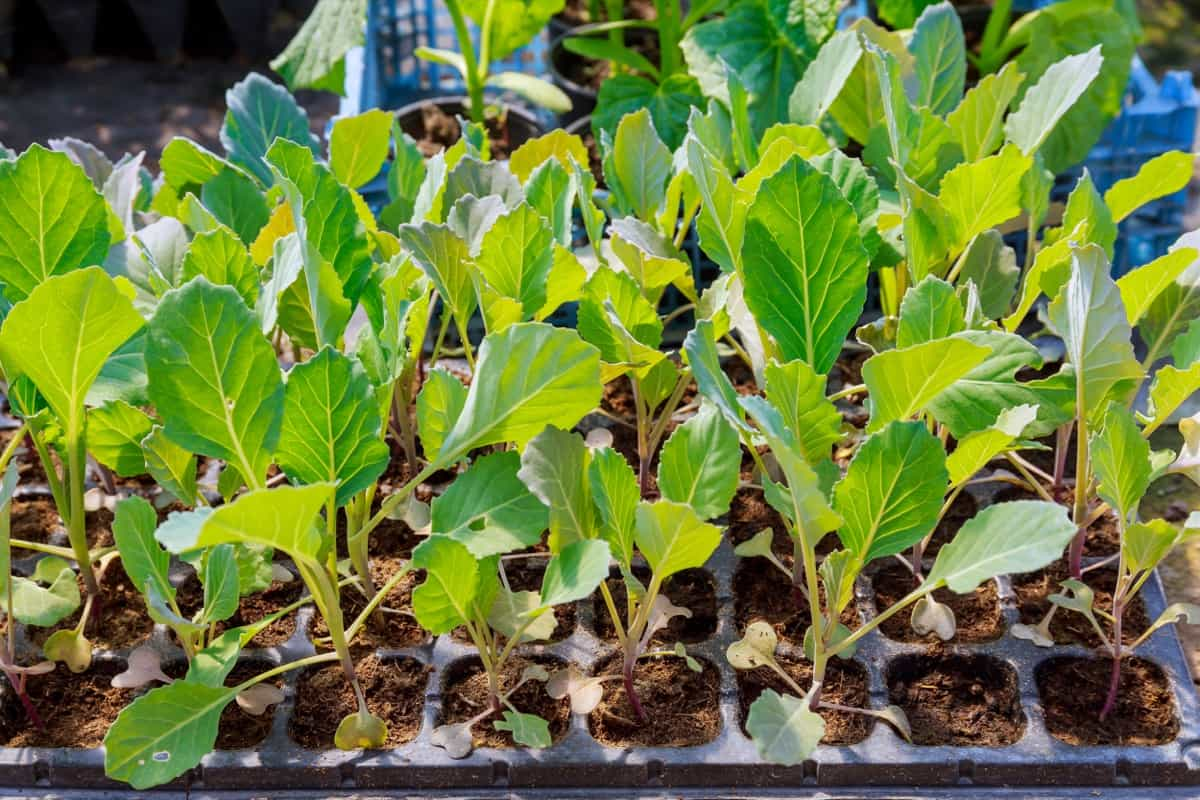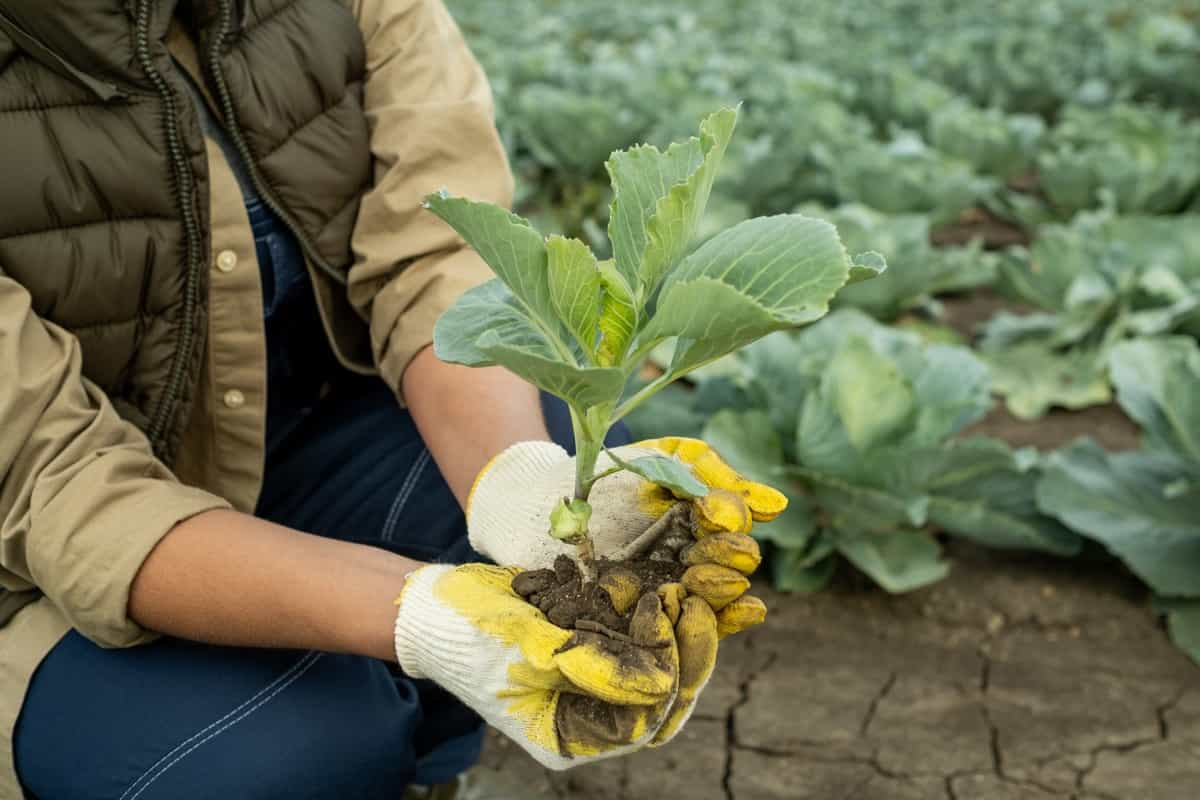Cabbage is a versatile vegetable that belongs to the mustard family. Cabbage, scientifically known as Brassica oleracea. Understanding the importance of choosing high-quality seeds is key to a successful germination process. High-quality seeds ensure better germination rates and healthier seedlings.

Choosing High-Quality Cabbage Seeds: Factors to Consider
Consider the variety of Cabbage that best suits your growing conditions and culinary preferences. Whether you opt for savoy, red, green, or Napa Cabbage, each type has its unique characteristics and flavors. Another essential factor is choosing between open-pollinated and hybrid varieties. Open-pollinated seeds allow for seed saving and adaptation over time, while hybrids offer uniformity and specific traits like disease resistance.
Additionally, look for reputable seed suppliers known for their quality products. Check the germination rate on the packet to ensure you’re getting viable seeds that will sprout reliably. Consider the storage recommendations provided by the seed supplier to maintain seed viability until planting time.
Understanding Cabbage Varieties: Open-Pollinated vs. Hybrid
Open-pollinated Cabbages are plants whose seeds will produce offspring similar to the parent plant. On the other hand, hybrid Cabbages are created through controlled cross-breeding of different Cabbage varieties. Some common open-pollinated Cabbage varieties include ‘Early Jersey Wakefield,’ known for its pointed heads, and ‘Red Acre,’ prized for its deep purple color. Hybrid Cabbages like ‘Golden Acre’ are popular for their uniform size and shape. Other Cabbage varieties include ‘Savoy Cabbage,’ with crinkled leaves preferred in cooking, and ‘Napa Cabbage,’ a Chinese variety commonly used in stir-fries and salads.
Seed Viability and Storage Recommendations
Always check the expiration date on seed packets before planting. Using fresh seeds increases the germination. Proper storage is crucial for maintaining seed viability. Store Cabbage seeds in a cool place away from direct sunlight and moisture. Consider using containers or resealable bags to protect seeds from humidity.
To extend the shelf life of your Cabbage seeds, store them in the refrigerator or freezer. Just make sure they are in sealed containers to prevent exposure to fluctuations in temperature and humidity. Periodically check stored seeds for any signs of mold or damage.
Preparing the Germination Medium: Soil Mix and Containers
Selecting the right soil mix is crucial. Opt for a well-draining and nutrient-rich potting mix to ensure proper seedling development. A peat moss, perlite, and compost mixture can create an ideal environment for germination. Consider using containers that provide ample space for root growth.
In case you missed it: Broccoli Seed Germination and Selection

Seedling trays or individual pots are great options to give each Cabbage seedling room to thrive. Before sowing your Cabbage seeds, moisten the soil mix lightly without saturating it. The goal is to achieve a dampness that will support germination. Press down gently on the surface after planting the seeds to ensure good seed-to-soil contact.
Sowing Cabbage Seeds: Depth and Spacing Guidelines
Cabbage seeds are relatively small, so they should be planted shallowly—about ¼ to ½ inches deep in the soil. This allows them easy access to oxygen and sunlight. As for spacing, Cabbages need room to grow into their full leafy potential. Plant seeds at least 18 inches apart in rows around 2 feet apart. Giving each plant enough space ensures they have ample nutrients and water to thrive without competition. Proper depth and spacing also provide adequate airflow between plants, reducing the disease and promoting healthy growth.
Optimal Germination Conditions: Temperature and Moisture Levels
Maintaining temperature and moisture levels is crucial to ensuring successful germination of Cabbage seeds. Cabbage seeds prefer a consistent temperature range between 21 °C and 29°C for ideal germination. It’s essential to provide warmth without overheating the seeds, as excessive heat can hinder germination.
Additionally, keeping the soil consistently moist is key. Overwatering can lead to seed rot, while underwatering can cause poor germination rates. It’s important to strike a balance by watering gently and regularly, ensuring the soil remains damp but not soggy. Using a misting spray bottle or watering from below can help maintain adequate moisture levels without disturbing the seeds.
In case you missed it: How to Get Rid of Cabbage Worms: Identification, Control and Prevention Methods

Providing Sufficient Light for Cabbage Germination
Ensuring that your Cabbage seeds receive sufficient light is crucial for successful germination. Cabbage plants require ample sunlight to kickstart their growth process and develop into healthy seedlings. Choose a well-lit area in your home or garden where the Cabbage seeds can receive 6-8 hours of direct sunlight each day. Place the containers with the Cabbage seeds near a sunny window or under grow lights, making sure other objects do not shade them.
Rotate the containers regularly to ensure even exposure to light and prevent seedlings from leaning toward one direction. Monitor the intensity of light and adjust accordingly to prevent seedlings from becoming leggy or weak due to insufficient light. Remember, providing adequate light is essential for promoting strong and healthy Cabbage seedling growth.
Troubleshooting Common Germination Issues
The most common problem is inconsistent moisture levels in the germination medium. Ensure that the soil is moist to promote seed sprouting. Another issue could be temperature fluctuations affecting the germination process. Make sure to keep your Cabbage seeds in a warm and stable environment for optimal results. Sometimes, poor seed quality or old seeds can lead to low germination rates. For better success, always choose high-quality Cabbage seeds from reputable suppliers.
Monitoring Seedling Development: Signs of Successful Germination
The first sign of successful germination is the emergence of tiny green shoots breaking through the soil’s surface. These delicate seedlings signify that your Cabbage seeds have taken root and are beginning to grow. Pay attention to the growth rate of your seedlings. Healthy Cabbage plants will exhibit steady and uniform growth, with leaves gradually unfurling and stems becoming stronger.
In case you missed it: How to Grow Cabbage in Containers from Scratch: A Successful Guide for Beginners

Look for vibrant green coloration in the leaves, indicating that they are receiving adequate sunlight and nutrients for photosynthesis. Keep an eye out for any signs of wilting or yellowing leaves, as these could indicate issues such as overwatering or nutrient deficiencies. By closely monitoring your seedling development, you can intervene promptly if any problems arise and ensure that your Cabbage plants continue to thrive.
Transplanting Cabbage Seedlings into the Garden
Select a sunny place with well-draining soil for optimal growth. Before planting, water the seedlings thoroughly to ease their transition. Carefully remove each seedling from its container, being cautious not to disturb the roots. Dig a hole in the ground larger than the root ball of the seedling. Gently place the seedling into the hole and cover it with soil, pressing lightly around the base for stability.
Ensure each plant is spaced according to its variety’s recommended guidelines to allow ample room for growth. Water newly transplanted Cabbage generously, but avoid overwatering as it can lead to root rot. Protect young plants from pests like Cabbage worms by using row covers or organic pest control methods. Regularly monitor your transplanted seedlings for any signs of stress and adjust care accordingly. By understanding the different Cabbage varieties, preparing the right soil mix, sowing seeds correctly, and providing optimal conditions for germination, you set yourself up for success.
- Gardening Techniques in Planting Vegetables
- Where to Place Indoor Plants in Your Home
- How to Grow Tomatoes Organically at Home: A Comprehensive Guide
- Organic Gardening on a Budget: Low-Cost Methods and Materials
- Gongura Seed Germination and Planting Methods
- Cabbage Seed Germination and Selection
- Broccoli Seed Germination and Selection
- Asparagus Seed Germination and Variety Selection
- Seasonal Flower Gardening: Best Practices for Spring, Summer, Fall, and Winter